Individual publications from 2024
I still remember being able to get up without making sound effects!

Aging is a natural and inevitable process of change that occurs throughout life. It involves a gradual decline in physical and cognitive function, whereby the rate and extent of these changes vary significantly from person to person. Innovation in Aging is an open-access scientific journal published by the Gerontological Society of America (GSA), which publishes innovative research, thereby contributing to a deeper understanding of the aging process and the development of effective interventions to improve the quality of life for older adults. Like last year, the Developmental and Educational Psychology Group (Denis Gerstorf) has contributed several publications to this year's journal. You should definitely check out their Articles on various fascinating topics. You find the Innovation in Aging Volume here.
Taming of the wild neurons...

Integrate-and-fire models are simplified mathematical representations of neurons that describe how they accumulate electrical charge (integrate) and fire an action potential (spike) when that charge reaches a threshold. They are widely used to simulate neuronal activity, from single cells to complex networks. Accurate parameter estimation is crucial for interpreting electrophysiological data within these model frameworks. However, a standardized approach for this estimation is lacking. The Theory of Complex Systems and Neurophysics Group (Benjamin Lindner) was able to identify the parameters of an adaptive integrate-and-fire neuron model with temporally correlated noise, using data from current-step experiments and could demonstrate that reliable parameter extraction is possible with a limited number of trials. Find out more in their Biological Cybernetics Article!
What doesn't kill you...
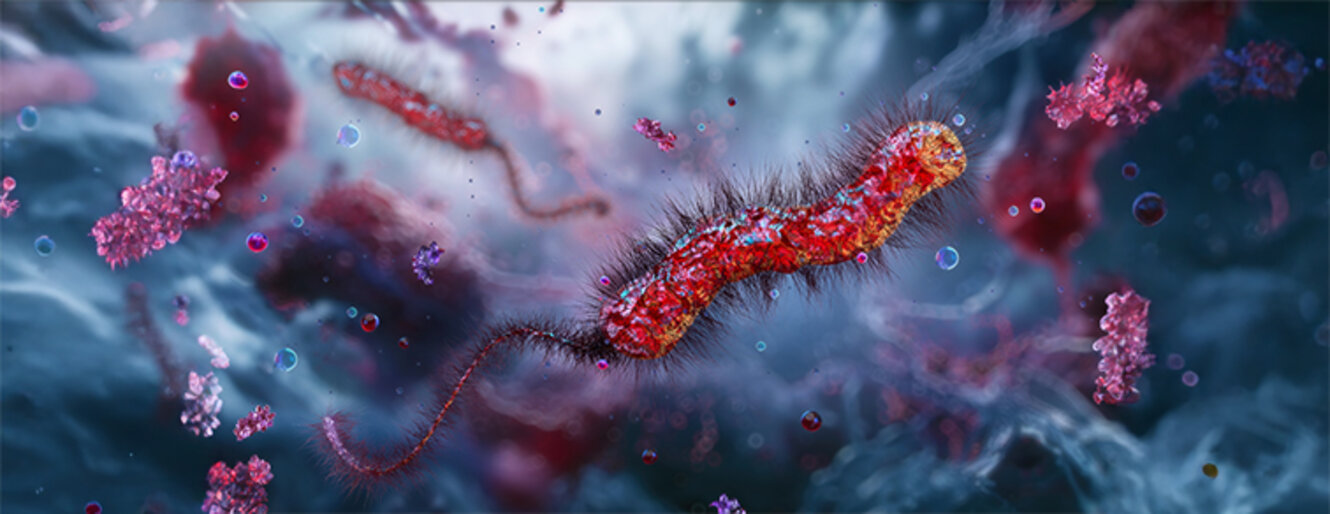
Vibrio cholerae is a species of bacteria that causes cholera by producing a toxin that disrupts the intestinal lining, leading to severe diarrhea, dehydration, and potentially death if left untreated. The Molecular Microbiology Group (Marc Erhardt) investigated the role of the RNA chaperone ProQ in post-transcriptional gene regulation within Vibrio cholerae. Employing RIL-Seq, they identified a vast network of ProQ-assisted RNA interactions, revealing a crucial role for the FlaX sRNA in regulating bacterial motility, which contributes decisively to the pathogenicity of the bacterium. If you want to obtain a comprehensive view of ProQ-mediated RNA regulation and its impact on bacterial virulence in V. cholerae, check out their Nucleic Acids ResearchArticle!
Cops and robbers...

Most (mobile) organisms are familiar with the challenge of pursuit-evasion; we ourselves encounter it at the young age in form of tag games such as Cops and robbers. In mathematics and computer science pursuit-evasion describes a class of problems where one group actively seeks to locate and capture members of another group within a defined environment. Benjamin Lindner and Davide Bernardi investigated mathematical models that describe the pursuit of a randomly moving object in one or two dimensions. If you want to learn more about (ii) analytically calculating the mean capture time, a crucial metric, (i) exploring how factors such as the target's diffusion coefficient and the number of pursuers influence the capture time, (iii) strategies that can optimize the pursuit process and (iv) potential generalizations and extensions of these models to enhance your understanding of pursuit dynamics in more complex scenarios, check out their Target Search Problems Chapter!
50 years of Surface-enhanced Raman spectroscopy!

Surface-enhanced Raman spectroscopy (SERS) has undergone a remarkable evolution over the past fifty years, transforming from a nascent phenomenon into a powerful analytical technique with diverse applications. Together with a remarkable number of experts in this field Janina Kneipp traced the historical trajectory of SERS, from its initial discovery and early challenges to its current renaissance driven by advancements in nanoscience and plasmonics. They analyzed key phases in SERS development, highlighting the critical role of innovative methodologies in overcoming limitations and expanding the technique's versatility. By examining the journeys of SERS and its related techniques, such as TERS and SHINERS, they aim to extract valuable lessons for future scientific endeavors, emphasizing the importance of interdisciplinary collaboration, perseverance in the face of challenges, and a proactive embrace of emerging technologies. If you want a comprehensive overview about this technique Check out their Review in Chemical Society Reviews!
The (reverse) Flynn effect!
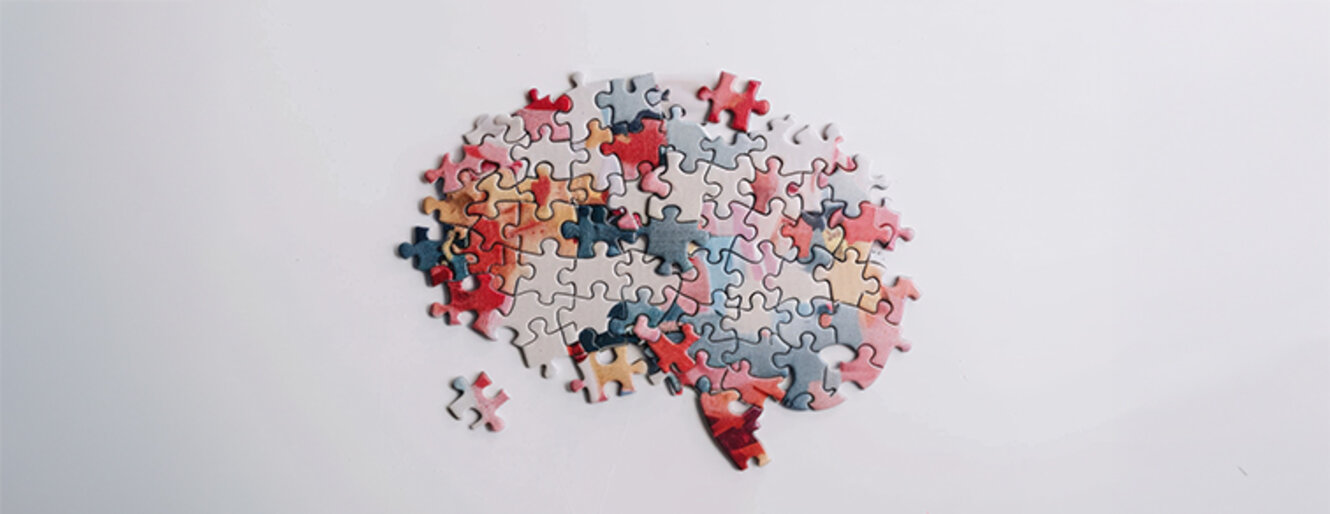
The Flynn effect, which documents a historical rise in cognitive test scores, has primarily focused on younger populations. The Developmental and Educational Psychology Group (Denis Gerstorf) investigated whether this trend extends to middle-aged adults (45-65 years) and how it varies across nations. By examining data from 16 countries, they assessed age-related changes in episodic memory performance across birth cohorts and found significant cross-national variation in the Flynn effect for middle-aged adults, with some countries showing improvements in episodic memory performance over time, while others, notably the United States, show declines. Find out more in their Psychology and Aging Article - maybe your country is represented as well!
There was a lot of panic buying in Germany of sausages and cheese.

Most of us still vividly remember the impact that the COVID-19 pandemic had on all of our lives. The disruption to daily life has led to difficulties, particularly for older adults, in maintaining healthy behaviors such as regular physical activity and a balanced diet. As social support from close others has been shown to play a vital role in promoting healthy aging, the Developmental and Educational Psychology Group (Denis Gerstorf) investigated the impact of variations in daily emotional and instrumental support on the dietary (fruit and vegetable consumption) and physical activity (step counts) behaviours of older adults during the pandemic. Check out their Canadian Journal on Aging Article!
May the forest be with you!

Forests play a crucial role in mitigating climate change and supporting biodiversity. Effective forest management and conservation are essential for ensuring their resilience in the face of increasing disturbances. The Landscape Ecology Group (Dagmar Haase) investigated the impact of different management and protection practices on two key indicators of forest dynamics: forest extent and canopy density. By analyzing changes in these indicators across Europe between 2012 and 2018, they aimed to understand how protected areas and various management regimes influence forest health and resilience. If you want to gain valuable insights into the effectiveness of current forest management and conservation efforts check out their Ecological Indicators Article!
A stallion's bloodline is fairly STABLE!

The horse is a cornerstone of human civilization and centuries of selective breeding, have shaped their genetic makeup. As breeding was particularly focused on stallions, the male-specific portion of the Y chromosome (MSY) is extremely uniform in modern horse breeds. Due to this fact, it is possible to trace the paternal lineage of modern horse breeds back over the last 1,500 years by analyzing the Y chromosome. The Breeding Biology and Molecular Genetics Group (Gudrun Brockmann) investigated key breeding influences and historical routes that have shaped today's equine world, thereby uncovering the intense linebreeding as well as the extensive impact of Arabian, English Thoroughbred, and Coldblood ancestry. Check out their Proceedings of the National Academy of Sciences of the United States of America Article!
One facial expression is worth a thousand words...

Human mimicry, the unconscious imitation of others' behaviors, plays a crucial role in social interaction and emotional communication. In their Chapter 'Emotional Mimicry' in Automatic Imitation, Ursula Hess and Agneta Fischer delve into the fascinating world of emotional mimicry, focusing on the imitation of nonverbal cues such as facial expressions, vocalizations, and body postures. It provides the perfect chance to explore the distinction between mimicry and other forms of behavioral matching, trace the historical roots of mimicry research and examine theoretical perspectives that explain this phenomenon. You should definitely check it out!
Let a mealworm your heart and your tummy!

The yellow mealworm, Tenebrio molitor, has emerged as a promising sustainable protein source, driving increased interest in its nutrition and growth. However, inconsistencies in experimental protocols have hindered direct comparisons between studies. To address this issue, a standardized protocol has been developed to evaluate the performance of mealworm larvae under various feeding conditions. This protocol provides a framework for researchers to conduct reliable and comparable experiments, facilitating the advancement of mealworm research. The Urban Plant Ecophysiology Group (Christian Ulrichs) participated in an international ring test that assessed the efficacy of the standardized protocol by evaluating the repeatability and reproducibility of the experimental outcomes. Check out their Journal of Insects as Food and Feed Article!
Now it's clear as DAE!

Differential-Algebraic Equations (DAEs) are a class of mathematical models that combine differential and algebraic equations. They are widely used to model a variety of real-world systems, including mechanical systems, electrical circuits, chemical engineering and control systems. While finite-dimensional DAEs have been extensively studied, infinite-dimensional DAEs present unique challenges, particularly in terms of their index. The Applied Mathematics Group (Caren Tischendorf) has delved into the intricacies of these index concepts in the context of both finite-dimensional and infinite-dimensional linear DAEs. Find out more in their DAE Panel Article!
Not everything in life will go according to plan...

Model-based recursive partitioning has emerged as a powerful technique for identifying subgroups of individuals with distinct patterns of relationships between variables. While traditional approaches have focused on structural equation models (SEMs) for cross-sectional data, recent advancements have extended this methodology to dynamic SEMs for longitudinal data. The Psychological Research Methods Group (Manuel Völkle) has developed a novel approach called score-based CT-SEM trees, which enables the analysis of data with irregular sampling plans. Find out more in their Chapter 'Score-Guided Recursive Partitioning of Continuous-Time Structural Equation Models' in Dependent Data in Social Sciences Research.
Spin there done that...

Spin-orbit interaction plays a crucial role in the behavior of electrons in condensed matter systems. Igor Sokolov investigated the dynamics of spin polarization in a two-dimensional system of spin-1/2 charged particles subject to a perpendicular magnetic field and external noise. If you are curious as well, check out his Physical Review E Article.
You don't need a mood ring. Your face says it all!

Most of us use them in our interactions with other individuals - some more, some less - emotional expressions! Emotion Recognition Accuracy (ERA) is a complex cognitive process influenced by both pattern matching and perspective-taking. The Assessment of Contextualized Emotions (ACE) test is a valuable tool for studying ERA which considers not only the social context and multiple emotions, it simultaneously distinguishes between accuracy (perceiving the intended emotions) and inaccuracy (perceiving additional emotions to those expressed). Using an fMRI-compatible adaptation of ACE the Social and Organizational Psychology Group (Ursula Hess) investigated whether emotion processing is associated with distinct brain activations for single versus group-embedded facial expressions as well as the behavioral relevance of regional changes in activation in the fMRI-compatible ACE task. Find out more about the importance of cognitive bias in the assessment of social emotion perception in their Social Neuroscience Article!
Kids or No Kids?

Parenthood is often considered a defining life experience, yet an increasing number of adults choose to remain childless. While research has extensively examined the well-being of parents, relatively little attention has been given to understanding the factors that contribute to the well-being of childless adults. The Developmental and Educational Psychology Group (Denis Gerstorf) investigated how life goals, particularly the desire to have children, influence the well-being trajectories of adults with and without children. By tracking the long-term well-being of individuals from young adulthood to midlife and examining how life goals shape the well-being of both parents and childless adults, they aimed to gain a more nuanced understanding of the diverse pathways to well-being in contemporary society. Whether you have children or not, you should definitely take a look at their Psychology and Aging Article!
I don't believe in confirmation bias!

Confirmation bias - the tendency to favor information that confirms existing beliefs - is a well-documented cognitive bias. While it can lead to irrational decision-making, it has also been shown to improve decision-making under uncertainty. However, the impact of confirmation bias on social decision-making remains relatively unexplored. In order to investigate how confirmation bias influences collective decision-making in a social context the Collective Information Processing Group (Pawel Romanczuk) developed a computational model, which allows to conduct agent-based simulations to explore the effects of resource scarcity, group size, and bias strength on group performance. Find out more in their PLOS Computational Biology Article!
Make the impossible possible!
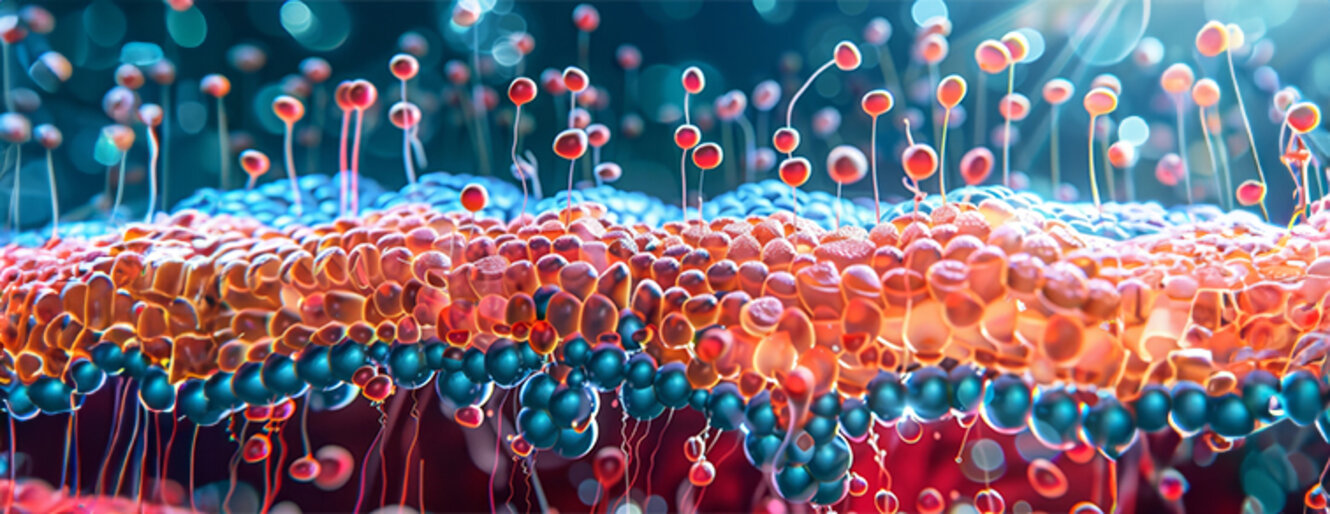
Sphingolipids are ubiquitous components of membranes in mammalian cells. The most abundant sphingolipid is sphingomyelin the breakdown of which has been associated with the pathogenesis of numerous viral and bacterial pathogens and sphingomyelinases (SMases) have been linked to many widespread diseases such as depression or cardiovascular and neurodegenerative diseases. Since lipids cannot be easily fluorescently labelled as is the case with proteins, their visualization in the cell is rather difficult and as a result their contribution to the infection process is only poorly understood. To overcome this obstacle, the Organic and Bioorganic Chemistry Group (Christoph Arenz) has developed novel trifunctional sphingomyelin derivatives that make it possible to visualize both the distribution and the metabolic activity of sphingomyelin in cells. Find out more about this fantastic innovation in their Nature Communications Article!
Slowly but surely...

Subdiffusive motion, characterized by slower-than-normal diffusion, is a common phenomenon in various physical systems. In this Physical Review E Review Igor Sokolovand Eugene Postnikov provide an overview about the underlying mechanisms governing subdiffusive motion in constrained environments improving the understanding of how geometric factors influence the dynamics of particles exhibiting anomalous diffusion.
Unlock your (SERS') potential!

Surface-enhanced Raman scattering (SERS) is a powerful technique used to enhance the Raman signal of molecules adsorbed on a metal surface. While traditional SERS focuses on one-photon excited spontaneous Raman scattering, recent advancements have explored nonlinear Raman processes. These processes, driven by high local fields generated by localized surface plasmon resonances (LSPRs), offer unique advantages for studying plasmon-molecule interactions and characterizing nanomaterials. In their ACS NanoPerspective, Janina Kneipp and Katrin Kneipp provide researchers can gain a deeper understanding of plasmon-molecule interactions and explore new applications in materials research, catalysis, and nanobiophotonics.
Why can't mosquitoes suck fat instead of blood?

Lipid droplets (LDs) are essential organelles involved in lipid storage and metabolism. In the malaria parasite Plasmodium falciparum, LDs play a crucial role in the parasite's life cycle. Despite their importance, the specific functions of LDs in P. falciparum remain relatively unexplored. The Molecular Parasitology Group (Kai Matuschewski) investigated the role of LDs in the malaria parasite's lipid metabolism by analyzing their size, composition, and dynamics throughout the parasite's life cycle. You can read more about their valuable insights into the parasite's lipid acquisition and utilization strategies and the potential of LDs as targets for new anti-malarial drugs in their Journal of Cell Science Article!
Oh, for fox sake!

Although city people are less exposed to nature than rural inhabitants, there are numerous points of contact with wildlife in cities. In addition to parks and urban forests, plants and animals that have managed to settle in the city can be found in ordinary streets. Encounters with city animals in particular often leave quite an impression. Who does not remember an unexpected meeting with a fox in the city center, after which one was amazed at how unfazed this creature moves in the midst of crowds of people, cars and skyscrapers? Or the cute little hedgehog that disappeared under the hedge! But I'm sure we all remember the fat rat or racoon that almost gave us a heart attack while taking out the garbage in the evening. The Landscape Ecology Group (Dagmar Haase) investigated how the residents of various German cities perceive their encounters with distinct wild mammals in residential areas by conducting and analyzing an online survey. Check out their interesting Ecology and SocietyArticle!
Can you make fish farming more e-fish-ient?

We live in a world in which resources are becoming increasingly scarce while the waste we produce has taken on immense dimensions. For this reason, sustainability is a necessary key issue in various areas of business, science and politics. The circular bioeconomy concept is a new economic model that emphasizes the use of renewable and natural ressources and the minimization of waste production, and thus attempts to meet the sustainability challenges and social demands of our society in equal measure. One important aspect is the promotion of biological production cycles, which involve the introduction products or wastes from one production system to another, thereby optimizing the yield of the resources used. The Urban Plant Ecophysiology Group (Christian Ulrichs) investigated which food source resulted in the highest biomass gain of the fish species Nile tilapia to optimize resource utilization. Check our their Frontiers in Sustainable Food Systems Article!
Don't shoot the messenger (RNA)!
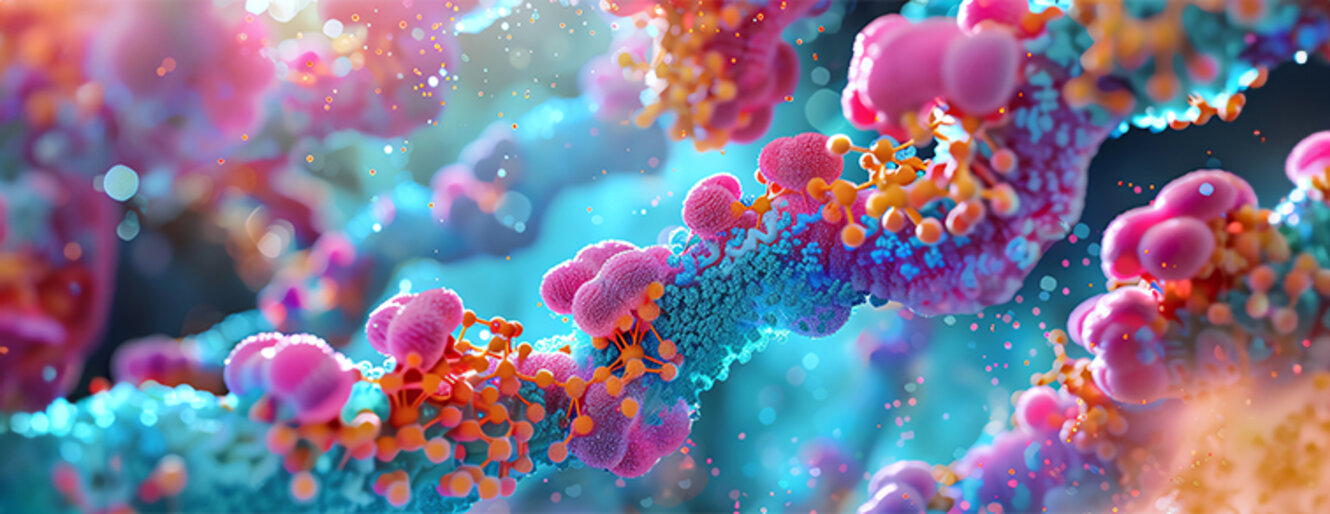
Messenger RNA (mRNA) are molecules in cells that carry the genetic information from the DNA in the nucleus to specific cytes in the cytoplasm where their protein synthesis takes place. To this day it is not entirely clear how mRNA localization is regulated. One widely accepted mechanism is the regulation via localization sequences within the mRNA interacting RNA-binding proteins, however only few examples have been identified so far. In her nature cell biology Review, Marina Chekulaevasummarizes the existing knowledge from the literature to convey a holistic understanding of this fundamental process and potential underlying mechanisms.
Instant Ram∉an Spectroscopy

Raman spectroscopy is a powerful and versatile technique that allows the examination of materials, biological and forensic samples without the requirement of fixation or sectioning and even enables the analsis of very small volumes. In this tutorial review, Janina Kneippsummarized the basics and influential factors that should be taken into account to successfully obtain Surface Enhanced Raman Scattering (SERS) spectra. If you want to get familiar with or enhance your knowledge of this technique check out their Chemical Society Reviews Review!
The Biophilia Effect

Nowadays, we live in a world that is increasingly moving away from rural life towards urban life. The urban world we have created has a strong impact on our environment and also has a significant influence on our health and social life. But how will our cities look like in the future? It should be our concern to create a habitat in cities where both humans and diverse wildlife can coexist. The Landscape Ecology Group (Dagmar Haase) reviewed existing literature of wild mammals in urban areas to investigate how urban areas should be managed and shaped to achieve coexistence of humans and wild mammals. They identified shortcomings in the existing literature and defined five key elements for a research agenda. Check out their Basic and Applied Ecology Research paper.
How many arthropods have you rescued today?

Most people will probably have heard that the human-induced insect extinction is a major problem for the future of our planet as a habitat, as they perform fundamental functions such as pollinators or natural defense against pests. Insects, which belong to the Phylum of artropods are not the only creatures of this group that perform essential tasks. Even though creatures like spiders, scorpions, millipedes and centipedes are often disliked or even feared, they make important contributions to the biodiversity of ecosystems, breaking down decaying plant materials and control insect population sizes. The Urban Plant Ecophysiology Group (Christian Ulrichs) investigated the effect of different winter wheat cultivation systems on the biomass and abundance of arthopods. Check out their Environmental Monitoring and Assessment Article!
Chloroquine on steroids! What could go wrong?

Malaria is a mosquito-transmitted life-threatening disease that is caused by the parasitic eukaryote plasmodium falciparum. Like most parasites, P. falciparum is dependent on the supply of nutrients from the host. One compound the organism is not able to sythesize itself is the lipid cholesterol. The Molecular Parasitology Group (Kai Matuschewski) investigated whether antimalarial drugs conjugated to cholesterol-analogous compounds show an antimalarial effect, which could provide a significantly improved drug efficiency. Find out more in their EMBO Molecular Medicine Article!
Trees - they're all bark and no bite...

You may have noticed that some trees in the city have been suffering from the unusually high temperatures and low rainfall in recent years. A healthy urban vegetation is not only important to counteract the increasingly rising temperatures, but they also improve air quality, buffer noice, and provide a space for recreation. Thus, monitoring the effects of drought on vegetation is crucial. The Landscape Ecology Group (Dagmar Haase) has established a new workflow that uses freely available remote sensing imagery from Sentinel-2 to holistically monitor urban green spaces providing an important foundation for future research and green space management. Find out more in their Ecological Informatics Article!
Tyrosine Rex - The king of axonal transport...
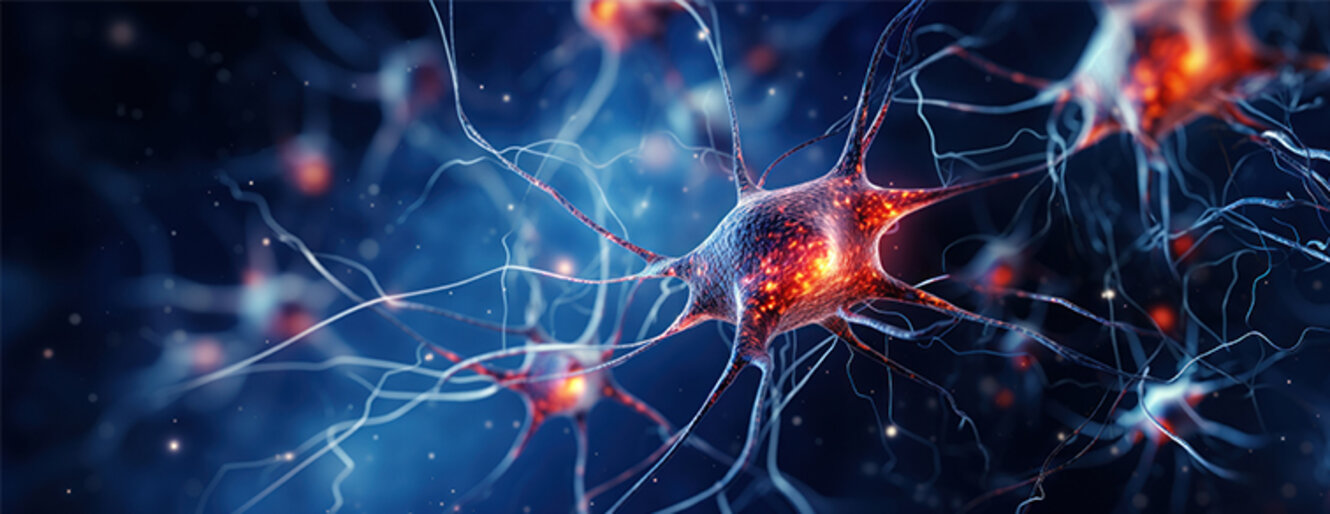
A functioning axonal transport is essential for nerve development, function and survival, as it involves the delivery of diverse cargoes from one end of the axon to the other. This process is carried out by motor proteins, which move the cargo along the microtubule cytoskeleton. The Optobiology Group (Marina Mikhaylova) investigated the importance of tyrosination and detyrosination of microtubules for functional axonal tranport. Check out their Journal of Cell Science Article!
When the 'rich club' is taking everything from you...

Alzheimer’s disease (AD) is a neurodegenerative disorder that is associated with a progressing decline in cognitive function. In the majority of cases, symptoms like the deterioration of memory and thinking skills appear at an advanced age. The 'rich club' describes highly connected network hubs, whose involvement in the development of AD is not clear at the moment. The Molecular Psychology Group (Sebastian Markett) was able to demonstrate first connections between AD and the rich club. You should definitely check our their Research Report published in Wiley!
What doesn't kill you makes you stronger!

Plants like Arabidopsis thaliana can withstand a wide range of temperatures and can also tolerate large temperature fluctuations. This ability demands a high degree of flexibility from the plant, which is provided at the molecular level, among others, by phase separation. This phenomenon enables the formation of membrane-less compartments, which represent a dynamic and flexible alternative to organelles, as they can be rapidly modulated by changes in protein concentrations, metabolites, salt or temperature. The Molecular Genetics Group (Christian Schmitz-Linneweber) investigated the role of the protein CP29A in the adaptation to changing temperature conditions and found that the protein undergoes temperature-dependent phase separation thereby regulating the expression genes involved in adaptation to cold climate. Check out their The Plant Cell Article!
Lonely is not being alone, it's the feeling that no one cares...

The COVID-19 pandemic has impacted the mental and physical well-being of individuals across all age groups, but it's anticipated to have particularly prolonged and pronounced effects on younger populations. As loneliness has been linked to an increased risk of mental health problems such as depression, anxiety, and suicidal ideation as well as cardiovascular and cognitive issues, this should be considered a very serious matter. The Psychological Research Methods Group (Manuel Völkle) compared the effects of an app-based classic mindfulness training program and an innovative partner-based socio-emotional practice (Affect Dyad). Not surprisingly, the partner-based training program was more effective. You can find out more in their International Journal of Environmental Research and Public Health Article!
Rather CTD than STD ^^

The C-terminal domain (CTD) of the RNA polymerase II serves as a flexible binding scaffold for numerous nuclear factors, which is controlled by its phosphorylation status. The CTD is important for the initiation of DNA transcription, mRNA capping and the association of the spliceosome with the transcript for mRNA splicing. Although phospho-specific antibodies are commonly used to detect CTD phosphorylation patterns, their recognition repertoire has barely been explored due to the challenging synthesis of long multiphosphorylated peptides. The Bioorganic Synthesis Group (Oliver Seitz) set out to develop a method that provides simple and reliable access to multiphosphorylated CTD peptides of up to 12 heptad repeats (84 amino acids) in length. Find out more in their Journal of the American Chemical SocietyArticle!
Where do you go, my lovely?

These days, everyone carries a tracker around with their cell phone. What on the one hand is a somewhat creepy thought can in some situations not only be convenient, but a real lifesaver. Real-Time Location Systems (RTLS) can also be used in the livestock farming world. Obtaining information about the time animals spend in relevant functional areas (e.g feeder) or elimination areas as well as its activity could deliver valuable information about the animal's general well-being and social behavior. The Animal Husbandry and Ethology Group (Lorenz Gygax and Edna Hillmann) tested the commercial Noldus Information Technology BV TrackLab system to validate its accuracy, precision, and data quality and also its suitability to monitor fattening pigs. Read more in their Animal Article!
I am not schizophrenic!

Schizophrenia is a mental disorder that is predominantly characterized by recurring psychotic episodes and can be associated with other symptoms such as hallucinations (e.g. hearing voices), delusions (e.g. paranoia), disorganized thinking or social withdrawal. Many people associate the label 'schizophrenia' with negative and often false beliefs and consequently the concerned individuals often face a negative perception and treatment. The Social and Organizational Psychology Group (Ursula Hess) investigated how the label 'schizophrenia' affects liking, interpersonal closeness, and emotional mimicry, to assess what this tenacious stigma is based on. Find out more in their Cognition and EmotionArticle!
Why you should 'let the sow out'!
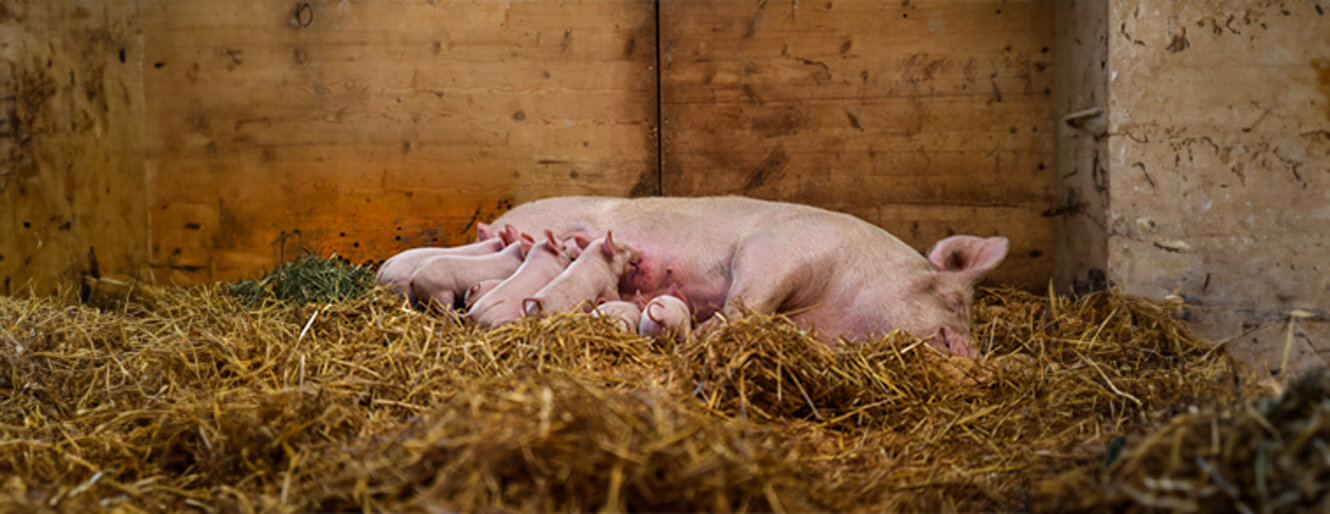
Sows spend most of their time lying down, and their lying behavior and, in return also, their activity level appear to be indicators of their welfare, as they reflect their ability to meet their physical and behavioral needs for rest or movement, which is especially important during parturition and lactation. The Animal Husbandry and Ethology Group (Lorenz Gygax and Edna Hillmann) investigated lying behavior of crated and free farrowing sows to compare how the distinct housing systems allow them to fulfill their needs for rest or movement and to evaluate the accuracy of accelerometer-based sow lying behavior classification. Check out their Journal of Animal Science Article!
Nature is not a place to visit, it is home.

Cultural ecosystem services (CES) and disservices are the positive or negative contributions that ecosystems make to human well-being. This refers to a person's identity, experiences and capabilities that are generated by interaction with environmental spaces, human perception and activity undertaken in this space. The Landscape Ecology Group (Dagmar Haase) examined how the advantages and disadvantages of CES occur together, and explored the connection between spatial and landscape features and the specific benefits and drawbacks associated with them. Find out more in their Science of The Total Environment Article!
Long live the Bell state!

Semiconducting quantum dots (QDs) hold significant potential for scalable quantum information processing as the localized electrons and spins can be used as qubits, a two-state quantum-mechanical system. In coupled QDs, the electrons can be entangled, which means that the quantum state of one particle cannot be described independently of the state of the other. The simplest example of two qubits’ quantum entanglement are the Bell sates, a form of entangled and normalized basis vectors. The Statistical Physics and Nonlinear Dynamics Group (Igor Sokolov) investigated the stability of different two-qubit entangled Bell states in coupled QDs in the presence of fluctuations. If you are curious what they found out, check out their recent publication in Physical Review!
Lonely, I'm so lonely...

Loneliness has been identified as a significant global public health issue and is associated with an increased risk for depression, compromised immunity, chronic illness, and even mortality. The Developmental and Educational Psychology Group (Denis Gerstorf) investigated the historical development of loneliness through midlife and compared how different factors, such as cultural norms, economic inequalities and policy frameworks relating to employment, family dynamics and healthcare affect these changes in the United States and in different countries across Europe. Find out more in their American Psychologist Article!
Imaging is good, but optogenetic control is better!

Single-molecule fluorescence microscopy is a powerful technique that has helped to elucidate the function and interplay of actors in numerous essential cellular processes such as the stepping of motor molecules, DNA replication, transcription, translation, or membrane receptor activity. By combining single-molecule fluorescence microscopy with the use of PhoCl, a recently developed green-to-red photo-convertible protein, the Cellular Biophysics Group (Andrew Plested) was able to establish a new experimental paradigm that allows for quantitative, single-molecule imaging as well as optogenetic control over membrane protein function. Check out their Nature Methods Article!
Hold on, let me overthink this!

We are affected by everyday stressors in very different ways, which has been linked with differences in our personality. Especially the tendency to overthink appears to increase the negative perception of seemingly everyday situations. The Developmental and Educational Psychology Group (Denis Gerstorf) investigated how other character traits, such as extraversion and openness, affect our psychological and emotional perception of our surroundings and events that we experience on a daily basis. Read more in their Journal of Research in Personality Article!
'TikTok' - 'Who's there?'

TikTok, is a popular short-form video hosting service from China that is among the fastest growing infotech brands, resulting in an increasing cultural impact worldwide. Numerous countries have implemented restrictions, bans, or endeavors to prohibit the usage of TikTok, among others, due to apprehensions over the presence of toxic content, dissemination of misinformation, and potential negative implications for mental health.
Sebastian Markett investigated factors that are associated with extensive TikTok Use and could identify a neurotic or conscious personality to be connected with a higher tendency toward TikTok Use Disorder (TTUD). Find out more in his BMC Psychology Article!
Can you imagine?

Visual imagery is our capacity to revive and manipulate visual depictions even when the corresponding visual stimuli are not present. The Distributed Cognition and Memory Group (Thomas Christophel) investigated how the vividness of visual imagery affects the strength of visual working memory representations in the visual cortex by comparing the ability of strong imagers to retain information about a stimulus feature compared to weak imagers. Have a look at their Wiley Article to find out more!
Your plants won't leaf you!

Unlike animals, terrestrial plants are unable to move from one place to another. Thus, they depend on adapting to their environment for instance by adjusting their height, root growth or photosynthetic capacity. The Plant Cell and Molecular Biology Group (Kerstin Kaufmann) investigated how Arabidopsis adapts its gene expression, and as a result several important pathways, in response to different light conditions. Find out more in their BMC Plant BiologyArticle!
Do you want to pick your brain a little?

Our sensory working memory allows us to temporarily hold onto what we see, hear, or feel, facilitating mental processes like thinking, problem-solving, and understanding even when the sensory input is no longer available. The Distributed Cognition and Memory Group(Thomas Christophel) investigated the patterns of neuronal activity that enable the flexible modulation of our working memory. If you want to pick your brain a little check out their Journal of Cognitive Neuroscience Article!
Holy cow!
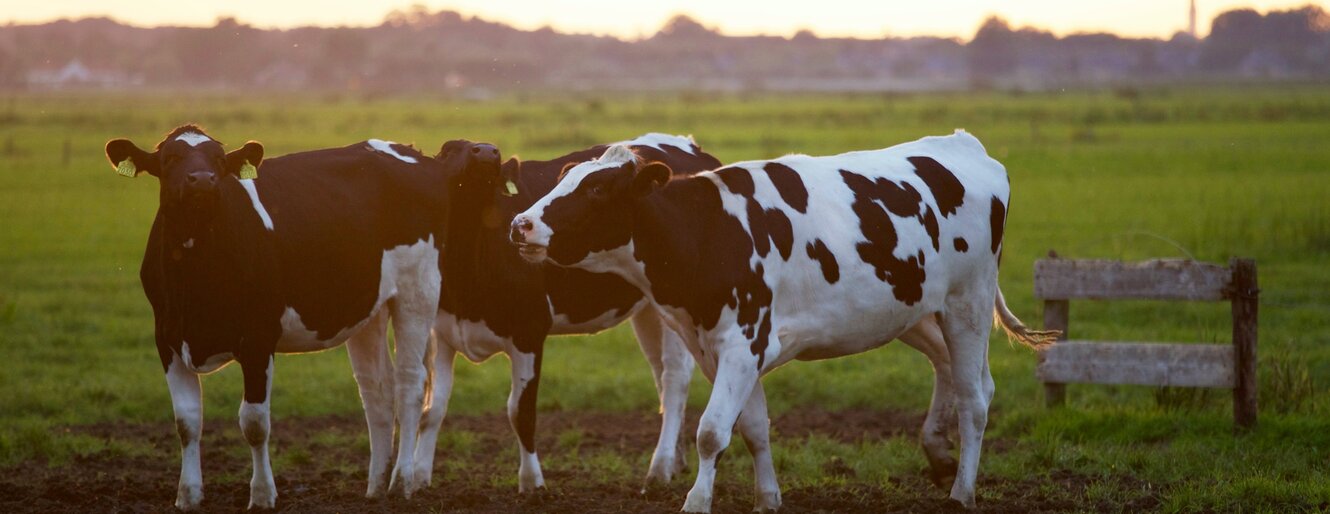
On request of the Federal Ministry of Food and Agriculture (Bundesministerium für Ernährung und Landwirtschaft) Gudrun Brockmann identified zootechnical markers for the improvement of breeding within the endangered German Black Pied cattle (Deutsches Schwarzbuntes Niederungsrind, DSN) breed for the particularly animal-friendly and sustainable production of animal products.
Unfortunately, the full Report is only available in German, but the abstract provides an informative summary. If you want to know more about this topic, check out Gudrun Brockmann's profile and additional information.
What do learning and memory and our immune system have in common?
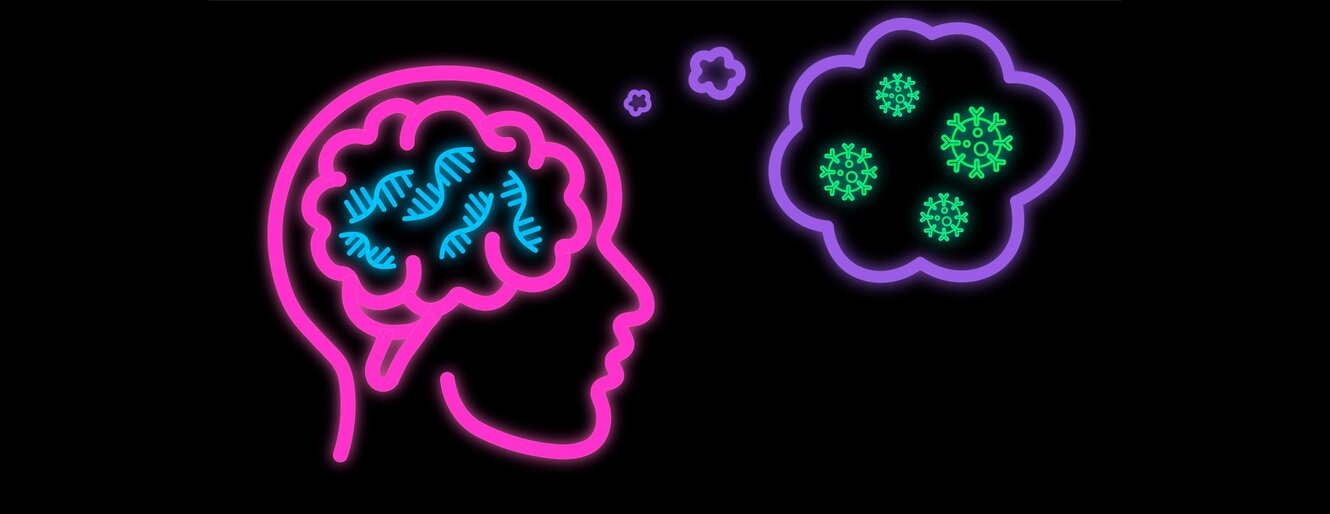
Non-coding RNAs (ncRNAs) form a diverse group of transcripts that, by definition, are not translated to produce proteins. For this reason, they were first classified as non-functional by-products or mis-products of transcription (or junk RNA). However, it became clear with time that ncRNAs act as important regulators that influence various biological functions in different cell types and tissues as they comprise transfer RNAs (tRNAs) and ribosomal RNAs (rRNAs), as well as small RNAs such as microRNAs, siRNAs, piRNAs, snoRNAs, snRNAs, and also long ncRNAs.
In their Journal of Neurochemistry Review Marina Mikhaylova, together with Mason Musgrove and Timothy Bredy from the Queensland Brain Institute in Australia, portrayed groups of ncRNAs enriched in the brain that play a crucial role in the functional aspects of both learning and memory, as well as adaptive immunity, and reflect on how they might facilitate the exchange between these two evolutionarily old biological systems.
Mind your own mood!

The Psychological Assessment Group (Matthias Ziegler) investigated how mindfulness affected the mood in response to a mobile-app-supported, mindfulness-based intervention. If you are curious whether mindfullness can improve the mood, have a look at their Article released by Applied Psychology: Health and Well‐Being!
Let’s face it — AI’m the future...

The recent Nobel Prizes in Physics and Chemistry awarded to pioneers in Computational Neuroscience and Artificial Intelligence highlight the significance of this field. Notably, seminal work by John Hopfield, including his influential research on neural networks published in Biological Cybernetics, played a crucial role in these advancements. While this recognition underscores the importance of the field, it's crucial to maintain momentum and continue pushing the boundaries of research in this area. Benjamin Lindner took part in writing a Biological Cybernetics Editorial that highlights journal's contribution to the field of Computational Neuroscience and Artificial Intelligence and the challenges the community is facing.
CERTainly good to know!

Bioluminescence Resonance Energy Transfer (BRET) is a technique to observe and measure the interactions between proteins within living cells and a valuable tool for biomedical research. The Organic and Bioorganic Chemistry Group (Christoph Arenz) established a novel BRET system for identifying inhibitors of the lipid transfer protein CERT. By fusing Nanoluciferase to CERT and utilizing Nile red-labeled ceramide, they created a sensitive assay to monitor CERT activity in living cells. Using this innovative approach they were able to screen a combinatorial library of HPA-12 derivatives and identify six compounds with improved inhibitory activity compared to the parent compound. If you want to find out more about this valuable tool, check out their Angewandte Chemie International Edition Article!
'Peace is a virtue of civilisation, war is its crime.'

Urban resilience is crucial for cities facing escalating global challenges, including climate change and geopolitical conflicts. While structural resilience focuses on pre-planned measures, emergent resilience emphasizes spontaneous responses that arise during crises. The Landscape Ecology Group (Dagmar Haase) explored the concept of emergent urban resilience in the context of the ongoing war in Ukraine. By examining how Ukrainian cities have responded to the Russian invasion, they aimed to develop a deeper understanding of the nature of emergent resilience in acute crisis situations and its significance for urban planning and recovery efforts. If you want to know more about the evolving discourse on urban resilience check out their Ekonomichna ta Sotsialna Geografiya Article!
You can’t help getting older...

A robust understanding of human development necessitates a strong theoretical foundation. Denis Gerstorf contributed to this special issue of Psychology and Aging, which brings together four key contributions that advance theoretical perspectives within the psychological science of adult development and aging. By exploring the interplay of age-related change, stability, and individual variation across generations and sociocultural contexts, these articles help to deepen our understanding of the multifaceted processes that shape the human lifespan.
'The most important thing in communication is hearing what isn’t said.'

Accurately understanding and interpreting the emotions of others is crucial for navigating social interactions and building meaningful relationships. While the importance of Emotion Recognition Accuracy (ERA) is widely acknowledged, its direct link to well-being remains poorly understood. The Social and Organizational Psychology Group (Ursula Hess) investigated the relationship between ERA and well-being across multiple cultures. The focus was on the Assessment of Contextualized Emotions (ACE), a test that distinguishes between accurately perceiving intended emotions and perceiving additional, "secondary" emotions that may introduce bias. If you want to find out how loneliness as well as the the level of personal and social well-being effect the accuracy of emotion recognition, check out their Journal of Research in Personality Article!
Awareness is the first step in healing...

A stroke is a medical condition caused by a poor blood flow to a portion of the brain. Whereas most people are familiar with the common symptoms which include problems to understand or speak, dizziness, inability to move or feel on one side of the body as well as unilateral loss of vision, a lesser known symptom is a significant impact on the emotional well-being, leading to difficulties in regulating emotions. While acting with awareness, a key component of mindfulness, has been shown to improve emotion regulation in healthy individuals, its role in stroke recovery remains unclear. The Developmental and Educational Psychology Group (Denis Gerstorf) investigated if and how daily levels of acting with awareness affect emotion regulation after a stroke and the suitability of refined mindfulness-based interventions to support emotional recovery in stroke survivors. Check out their Social Science & Medicine Article!
Cannabis plants can be high maintenance...

Cannabis is a plant with a rich history and diverse application, and has experienced a surge in economic importance in recent years. As the global demand for cannabis-derived products continues to grow, there is a pressing need to optimize cultivation techniques to enhance both yield and quality. One promising approach to achieving this goal is to modulate the plant's physiological responses through the strategic application of light, particularly ultraviolet (UV) radiation. The Urban Plant Ecophysiology Group (Christian Ulrichs) investigated the impact of different UV spectra and intensities on the growth, development, and secondary metabolite profile of cannabis plants in order to identify optimal conditions for maximizing terpene production while maintaining high yields and cannabinoid content. I bet you've gotten a little curious now too! So check out their Frontiers in Plant Science Article!
Spatial SLAM-seq - the slam dunk of RNA Profiling!

RNA (Ribonucleic Acid) is a molecule essential for life, as it plays a crucial role in protein synthesis, carrying the genetic information from DNA to the ribosome, the cell's protein-making machinery. The precise localization of RNA within cells is essential for cellular function, especially in neurons. This localization allows for the targeted regulation of protein synthesis at specific sites, influencing processes like neuronal development and synaptic plasticity. SLAM-seq is a powerful approach for measuring RNA stability. As this methods provides a global view of RNA dynamics, compartment-specific differences are often overlooked. In their mRNA Decay Chapter 'Concurrent Profiling of Localized Transcriptome and RNA Dynamics in Neurons by Spatial SLAMseq' Marina Chekulaeva and Sayaka Dantsuji describe their advanced version spacial SLAMseq which combines traditional SLAMseq with subcellular compartment separation techniques. A must-read for all RNA and/or neuro-enthusiasts!
'All that glisters is not gold'

NBD-Cl is a fluorescent labeling reagent widely used to track biomolecules such as lipids and proteins or to monitor enzyme activities. However, the potential impact of NBD labeling on cellular metabolism remains a concern. The Optical Nanospectroscopy Group (Janina Kneipp) and the Organic and Bioorganic Chemistry Group (Christoph Arenz) investigated the molecular changes induced by NBD-Cl and NBD-ceramide (NBDCER) in the endolysosomal compartments of 3T3 fibroblast cells and J774 macrophage cells to identify specific molecular alterations and understand their implications for cellular function. Find out more about the 'hidden' contributions of the NBD group in their The Journal of Physical Chemistry C Article!
Mastitis is udderly painful!

Mastitis is a common disease in dairy cattle that is often caused by infections of the udder with microorganisms and significantly impacts milk production and quality. While genetic factors have been implicated in mastitis susceptibility, the specific genetic markers associated with different pathogens remain elusive. Previous studies have identified several Single Nucleotide Polymorphisms (SNPs) associated with somatic cell count (SCC), a common indicator of mastitis. The Breeding Biology and Molecular Genetics Group (Gudrun Brockmann) investigated the association between these previously identified SNPs and the presence of three major mastitis pathogens: Escherichia coli, coagulase-negative staphylococci (CNS), and Streptococcus uberis. If you are curious how to use specific SNPs to predict pathogen presence or pathogen resistance, check out their Journal of Animal Breeding and Genetics Article!
Inside every plasmon-catalyzed reaction is the potential for an incredible application!

The conversion and storage of solar (and other form of renewable) energy is a topic that has occupied us for a long time and is only becoming more important with global climate change. Plasmonic catalysis is a method of converting light energy into chemical energy through heterogeneous catalytic reactions induced by plasmons. Together with Zhiyang Zhang, Janina Kneipp delves into the exciting world of plasmon-assisted reactions, focusing on the role of surface-enhanced Raman spectroscopy (SERS) in unraveling their underlying mechanisms. SERS, as a powerful spectroscopic technique, allows for the in-situ observation of molecular interactions at the nanoscale, providing invaluable insights into the key steps of plasmon-catalyzed reactions as well as their potential for application. Check out their Chapter 'Monitoring Plasmon-Assisted Catalysis by SERS' in Surface- and Tip-Enhanced Raman Scattering Spectroscopy!
Time to say goodbye...

Most of us have experienced it at least once in life - a devastating breakup. Romantic breakups can have significant emotional and psychological consequences. While research has consistently shown that men tend to suffer more from these separations than women, the underlying reasons for these gender differences remain unclear. The Developmental and Educational Psychology Group (Denis Gerstorf) investigated the gender-specific responses to romantic breakups, focusing on factors such as initiation of separation, well-being, loneliness, and desire for a new partner. If you are curious about how gender and age affect one's ability to survive a breakup unscathed, check out their Psychology and Aging Article!
What's better than having a (role) model? Two!

Multivariate decoding techniques are widely used to study the neural basis of working memory. Encoding models offer a promising approach to understanding the tuning properties underlying these neural representations by explicitly modeling the similarity relationships between different stimuli. The Distributed Cognition and Memory Group (Thomas Christophel) set out to evaluate the effectiveness of encoding models for quantifying mnemonic representations using both simulated and real data and found that a reliable identification of the true model requires comparing the variance of two or more competing models. If you want to learn more about this process check out their Journal of Vision Article!
What makes a good drug dealer?

Major Facilitator Superfamily (MFS) proteins play crucial roles in drug transport across cell membranes. In Plasmodium falciparum, the causative agent of malaria, the MFS protein PfMFSDT has been identified as a potential drug transporter. However, its functional relevance in drug resistance remains unclear. By expressing PfMFSDT in C. glabrata - a well-established model organism for studying fungal drug resistance - and analyzing its localization and drug resistance profiles, the Organic and Bioorganic Chemistry Group (Christoph Arenz) has provided important additional information on the role of PfMFSDT in conferring resistance to P. falciparum. Check out their Future Microbiology Article!
GUNs don't kill people, they develop plants!

We encounter plants every day (hopefully at least). But have you ever looked at what plants can do at the molecular level? Unlike us, plants have different types of plastids, such as chloroplasts, which use light energy to produce O2 from CO2 and thus provide us with a basis for life on this planet. Plastid biogenesis and the coordination between plastid and nuclear genomes are complex processes and critical for plant development. The protein GENOMES UNCOUPLED1 (GUN1) plays a pivotal role in retrograde signaling, a process that communicates the status of plastid function to the nucleus. Despite extensive research, the molecular function of GUN1 has long remained elusive. However, investigating the function of GUN1 the Molecular Genetics Group (Christian Schmitz-Linneweber) found that the protein is involved in RNA binding and maturation, resolving long-standing controversies about its molecular function. Find out more in their Plant Communications Article!
Are they bugging you?

Aphids are a significant pest of sweet pepper plants, causing damage by feeding on amino acids in the leaves. As magnesium (Mg2+) plays a crucial role in the transport of amino acids from leaves to fruits the Intensive Food Plant Systems Group (Tsu-Wei Chen) investigated whether the application of Mg2+ could reduce aphid colonization by decreasing the availability of amino acids in leaves by promoting their transfer to fruits. If you are curious whether magnesium is the key to improving the nutritional environment for the plant while simultaneously reducing the attractiveness of the leaves to aphids, check out their Scientia Horticulturae Article!
Life is short - make the moist of it!

Green infrastructure (GI) plays a crucial role in enhancing urban resilience and sustainability. However, traditional GI planning often overlooks the spatial distribution of residents, leading to potential conflicts between spatial equity and equitable green exposure. The Landscape Ecology Group (Dagmar Haase) established a novel accessibility equity approach for prioritizing GI development in Zhengzhou, China, which considers various socioecological factors and population density and aims to identify areas that require greater focus on GI implementation to ensure equitable access to green spaces and associated benefits. Check out their interesting Sustainable Cities and Society Article!
Our daily dose of air pollution...

Climate change poses significant threats to human health and well-being. Understanding individual vulnerability to climate hazards is crucial for developing effective adaptation strategies. The Developmental and Educational Psychology Group (Denis Gerstorf) established a new intraindividual variability construct, called affective sensitivity to air pollution (ASAP), which measures how an individual's emotional state fluctuates in response to daily changes in air quality. Check out in their PLOS ONE Article to find out more about ASAP and how it can help to incorporate mental health and emotional well-being into climate adaptation strategies to enhance resilience and overall human welfare.
It never get's boaring in the city!

As cities grow and also rural areas are to a large extend characterized by agriculture and infrastructure natural habitats for wildlife are becoming increasingly scarce. Oganisms that are able to adapt to urban conditions however can profit from the these can benefit from the diverse supply of food and shelters attracting more wildlife to the cities. This coexistence can lead to conflicts. In order to better understand which animals have a high potential for conflict and how these conflicts can best be resolved, the Landscape Ecology Group(Dagmar Haase) interviewed experts and summarized their findings in their People and Nature Article! You should definitely check it out!
Probiotics - eggs-ercise for the immune system

It is well known, that our gut microbiome has a great influence on our physical and mental wellbeing. Intestinal bacteria help us to break down our food, provide us with vitamins and metabolites and support our immune system. Therefore, a healthy diet and probiotics are powerful tools to modulate our general health. Also chickens are known to benefit from being fed probiotic bacteria, which is assumed to be mainly caused by modulation of the immune system. The Breeding Biology and Molecular Genetics Group (Gudrun Brockmann) investigated how these bacteria interact with the peripheral blood mononuclear cells (PBMCs) of chickens by whole transcriptome profiling and cytokine array analysis. Check out their Frontiers in ImmunologyArticle!
Does a joke become a dad joke when it becomes apparent?

Developmental psychology investigates human growth and changes across the lifespan. This comprises the physical, cognitive, social, intellectual, perceptual, personality and emotional development. The developmental cascade model describes how the speed to process information increases with age (especially in our early years), which boosts the working memory, which in turn improves fluid intelligence. While these factors naturally vary from person to person also a intra-subject variability exists. The Psychological Research Methods Group (Manuel Völkle) investigated the role of intra-subject variability within the pathways that constitute the developmental cascade model. Check out their Intelligence Article!
What is your opinion on beavers?

Not so long ago, beavers were threatened with extinction in Germany. The good news is that the German beaver population has grown considerably and is no longer considered an endangered species. The bad news is that we humans don't like it at all when someone else drastically and effectively changes the environment, especially if it is to our disadvantage. The Landscape Ecology Group (Dagmar Haase) has studied the competition in detail and analyzed where conflicts of interest arise between humans and beavers and discussed approaches that would enable a mutually acceptable coexistence. Have a look at their People and Nature Article!
Let's focus on the good!

The mood of the people around us can be contagious - both in a positive and negative sense. Cortisol, a hormone that is released in response to stress and low blood sugar levels, induces the increase of the glucose concentration in the blood, down-regulates the immune system and promotes the turnover of calories. Since the release of cortisol is connected to emotional experiences, one might think that it can therefore also be influenced by the emotional states in our environment, especially by those close to us. The Developmental and Educational Psychology Group (Denis Gerstorf) investigated if and how a person’s emotions influence the partner’s cortisol state and interestingly found that positive rather than negative emotions impact one’s partner on cortisol level. Find out more in their Psychoneuroendocrinology Article!
I don't like stress because stress stresses me out!

Stress is a natural human response that is triggered when we are under pressure or feel/are threatened. In our modern society stress appears to be a constant companion causing all kinds of stress-related disorders including depression and anxiety. This makes measures that promote our mental and physical well-being all the more important. The Psychological Research Methods Group (Manuel Völkle) compared the effectiveness of two online contemplative mental training programs and found that daily socio-emotional dyadic practices appear to represent a capable approach for stress reduction. Find out more in their Frontiers in Endocrinology Article!
It's always a good idea to keep an ion your electrons!

Plasmonics is a field of study that explores the interaction between electromagnetic fields and free electrons in a metal. When light interacts with the surface of a metal at a specific frequency, it can excite collective oscillations of the metal's free electrons, known as plasmons. These plasmons can be confined to very small dimensions, much smaller than the wavelength of light, enabling the manipulation of light at the nanoscale. This characteristic has led to the application of surface plasmon resonance in a variety of areas such as surface-enhanced Raman scattering (SERS), metal-enhanced fluorescence (MEF), photocatalysis, optical trapping or heating. The Optical Nanospectroscopy Group (Janina Kneipp) has developed a method for a simple and low-cost preparation of functionalized nanoporous metal films decorated with rhodium nanoparticles, which can be exploited as plasmonic materials for enhanced UV Raman spectroscopy. If you want to learn more about their preparation and application check out their Materials Advances Article!
In summer, my favorite outdoor activity is going back inside...

People living in bigger cities are most likely familiar with the urban heat island (UHI) effect, meaning that urban areas tend to be considerably warmer than the surrounding rural areas. To better understand the underlying factors the Landscape Ecology Group (Dagmar Haase) investigated how city composition, layout and landscape patterns impact the land surface temperature (LST) in the Megacity Lahore, Pakistan. If you are interested how to create healthier and more comfortable environments in cities check out their Environmental Monitoring and Assessment Article!
If my mouth doesn't say it, may face definitely will...

The facial expression of emotions is important in regulating social interactions in everyday life. However, like any social signal, the perception of facial expressions, is influenced by contextual information such as body posture, the person’s physical environment, the voice or background knowledge about the person. The Social and Organizational Psychology Group (Ursula Hess) investigated whether expansive valence or rather specific emotion matches are responsible for providing context and how multiple sources of contextual information influence emotion recognition. Check out their Emotion Article!
You make me sick!
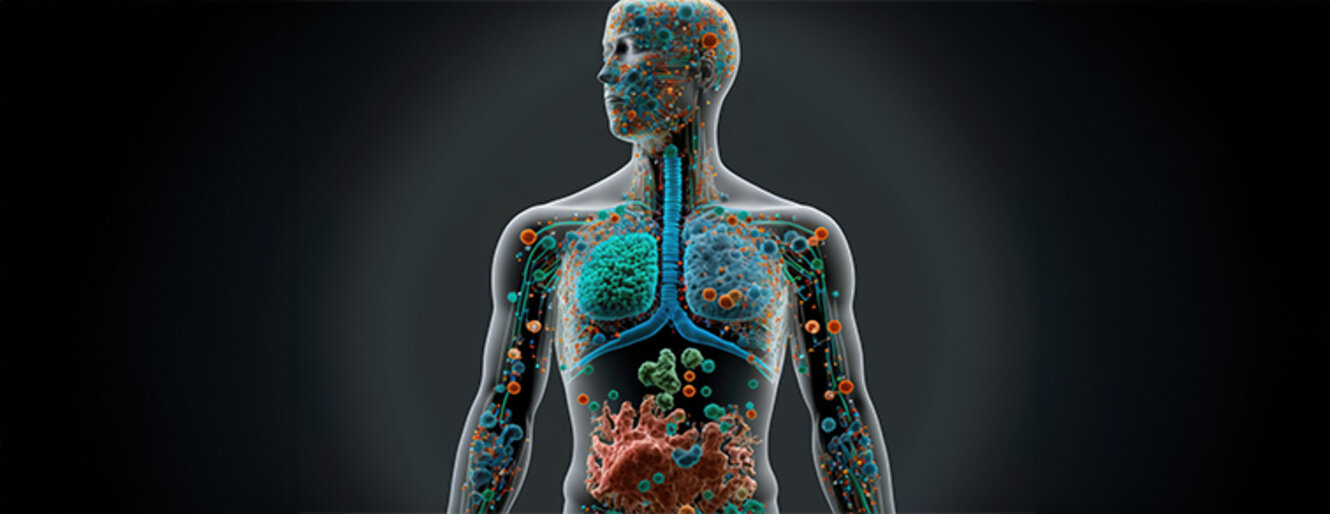
Bacteria make up just over half of our cells and live in or on our tissues and body fluids. Many of these tiny organisms perform essential tasks for us such as the fermentation of food, the protection against pathogens, the stimulation of our immune response as well as the production of vitamins. Representatives of the species Klebsiella oxytoca are an important part of the human microbiome, especially in the first years of our lives. Curiously enough, they are able to produce dangerous toxins, but still contribute significantly to the protection against colonization by exogenous microorganisms. The Molecular Microbiology Group (Marc Erhardt) investigated this phenomenon, which at first glance seems contradictory, in order to better understand the intermicrobial interactions. Have a look at their Nature Microbiology Article!
As a 'cityzen' I find trees quite shady!

City folk in particular often have an ambivalent relationship with trees. They beautify the cityscape, clean the air and provide us with oxygen, hold the soil together and protect it from erosion, the list goes on... On the other hand, the nasty trees rob us of our space to build buildings and roads and I'm pretty sure their chosen method of reproduction via pollen is simply to wipe out not just allergy sufferers but all of humanity. The Landscape Ecology Group (Dagmar Haase) addressed this topic in their Urban Ecosystems Article, which you should check out if you are interested in the future of humanity.
You're Only as Old as You Feel...

You probably heard the saying 'It's downhill after you turn 30' and it actually seems as if the aches and pains increase from this age. Your back troubles you here, your knee hurts there and those headaches! The Developmental and Educational Psychology Group (Denis Gerstorf) investigated the connections between pain, subjective age, and chronological age in middle-aged and older adults and found indications that one's subjective age may act as a predecessor as well as a consequence of pain, which in turn can result in a faster increase in subjective age. Check out this interesting Psychology and Aging Article!
Did you hear the joke about mosquitoes?

Malaria is a disease transmitted by mosquitoes that affects different kinds of vertebrates. Although the life cycle of the malaria-causing plasmodia - besides the mosquito - typically involves only one preferred type of vertebrate, there are regular infections of humans with non-human pathogens and vice versa. To better understand the evolution and diversity of malaria parasites the Molecular Parasitology Group (Kai Matuschewski) investigated Plasmodium infections in bats and was able to identify a new species. Check out their International Journal for Parasitology Article!
Whoever says 'GenBank' and 'UniProt' must also say 'MicrobioRaman'!

Biological databases are valuable tools that provide information about the structure of biomolecules and their interactions, and help to analyze, explain and manipulate biological phenomena and to understand the evolution of specific traits and entire species. The Optical Nanospectroscopy Group (Janina Kneipp) participated in a joint effort to set up a new freely accessible archive for microbiological Raman spectroscopy data. If you want to know more about ‘MicrobioRaman’, check out their Nature Microbiology Article or the database itself!
Teamwork makes the dream work...

Complex collective behaviors of human, animal and even robotic collectives are the result of the interplay of individual dynamics and social interactions. To understand how individuals that are part of groups make use of social information e.g. during foraging together, and how this application of social information impacts the collective outcome through the behavior of single individuals, the Collective Information Processing Group (Pawel Romanczuk) developed a model that combines models of individual decision-making of foraging agents (evidence accumulation processes) with the movement models of these individuals in space. If you want to find out more and how this model paves the way for fully decentralized mobile robot applications, check out their PLoS Computional Biology Article!
Damn it's cold outside!

The exposure of plants to cold temperatures induces a process called cold acclimation, where gene expression is significantly altered to allow the plant to adapt to their new environmental conditions. The Plant Cell and Molecular Biology Group (Kerstin Kaufmann) investigated the role of the repressive histone 3 lysine 27 trimethylation in this process to better understand the involvement of chromatin regulation. Find out more in their Frontiers in Plant Science Article!
It's not a diet, it's a lifestyle change!

The COVID-19 pandemic caused until then unprecedented changes in people's lifestyle, work and social interactions. Social distancing and the closing of gathering and interaction centers such as parks, cafes, educational institutions etc., entailed certain social, mental and physical health circumstances. One predominant factor was unintentional changes in body weight, which have been reported for younger and middle-aged adults. As the affect on older adults was hardly considered, the Developmental and Educational Psychology Group (Denis Gerstorf) investigated this particular age group in the course of the pandemic. Find out more in their The Journal of nutrition, health and aging Article!
To dye or not to dye...
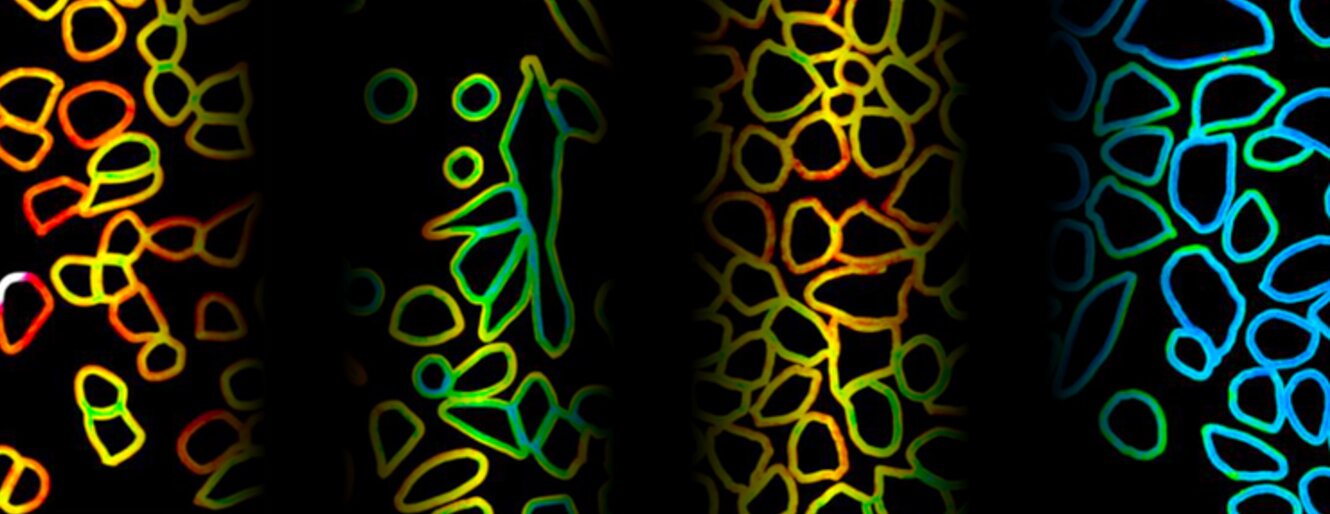
Fluorescence molecular rotors (FMRs) are a group of fluorescent molecules that undergo an intramolecular twisting motion, which non-radiatively depletes the excited state. As a result, environments that prevent this twisting motion, produce enhanced fluorescence. In the past, these dyes have been used mainly to measure nanoviscosity or interactions of FMR-labelled ligands with proteins and nucleic acids. The Bioorganic Synthesis Group (Oliver Seitz) explored covalent labelling of cell surface sialic acids with the FMRs and established the application of FMR dyes to detect interactions with glycans, expanding the use of FMRs. Find out more in their Chemical Communications Article!
Data makes the world go round!

Modelling biological systems is a significant and increasingly important task that involves the use of computer simulations of biological systems in order to analyze and visualize the underlying complex connections. To obtain precise models high quality data is a prerequisite. The Theoretical Biophysics Group (Edda Klipp) reviewed basic requirements to data for whole-cell models and strategies how to combine them. Check out their FEMS Yeast Research Article!
Green is cool!

Summer in Berlin feels so much hotter and more suffocating than it does on the countryside, especially during the night, when temperatures just won't drop. To counteract the urban heat island effect, particularly as temperatures will only rise in the upcoming years, the expansion of green spaces (GS), which have a cooling effect, is a prerequisite for for living in cities in the future. The Landscape Ecology Group (Dagmar Haase) investigated, the relationship between GS and land surface temperature using the Chinese megacity Guangzhou as an example and found that a combination of increasing the area and optimizing the spatial distribution of green spaces results in the best cooling effects. Find out more in their Environmental Science & Technology Article!
Mosquitoes suck...

In postmortem human brains, sequestration of infected red blood cells (iRBCs) in the small blood vessels of the brain is a distinctive feature of cerebral malaria (CM). As there's ongoing debate regarding how this phenomenon contributes to the manifestation of the disease, especially the development of fatal brain swellings, the Molecular Parasitology Group (Kai Matuschewski) investigated iRBC-triggered inflammation and its affect on the blood flow in the brain. Find out more in their Nature Communications Article!
All you need is green...

Green spaces (GS) are vital for improving human well-being as they not only provide environmental regulation services but also cultural amenities. Urbanization has led to an insufficient provision of urban GS along with an uneven distribution, posing significant risks to human health and environmental equity. The Landscape Ecology Group (Dagmar Haase) investigated, the equity of GS availability between urban villages and residential quarters, which are two common residential neighborhood types in Chinese cities. Find out more about the differences and their effects in this Journal of Cleaner Production Article!
What makes a breadwinner?

Meeting the food needs of an ever-growing world population is one of the great challenges of the future. Bread wheat (Triticum aestivum L.) is an essential agricultural product, that plays a critical role in meeting human dietary needs and sustaining energy requirements. As spike architecture influences size and number of grains and consequently grain yield, the Plant Cell and Molecular Biology Group (Kerstin Kaufmann) have tackled the important task of dissecting the genetic and molecular basis of spike traits. Find out more in their Plant Communications Article!
Are you mentally mapping?

In the field of behavioral geography, a mental map refers to an individual's subjective perception of their environment and interactions within it. The Landscape Ecology Group (Dagmar Haase) investigated how sub-urban Stockholm citizens perceive the green-blue infrastructure (GBI) in their surroundings. You can find out more about mental mapping in their Urban Forestry & Urban Greening Article. How aware are you of your environment and how would such a map look like for your home and work surroundings?
The potential double life of an sRNA...

Apicomplexa are a diverse group of unicellular parasitic eukaryotes whose primordial mitochondrial genomes comprise 30 – 40 genes encoding for small RNAs (sRNAs) of which numerous resemble E. coli rRNA. The Molecular Genetics Group (Christian Schmitz-Linneweber) investigated the expression and function of these sRNAs and their findings provided first hints for a dual utilization of mitochondrial sequences as messenger RNAs as well ribosomal RNAs. If you are interested in these seemingly moonlighting sRNAs, check out their eLife Article.
It may look like I'm doing nothing, but I'm actually evolving!

Dormancy is a temporary and reversible slowdown or suspension of an organism's regular physical functions. This state is a ubiquitous trait in microbial communities, but can also be found in complex organisms including animals and plants. The Interdisciplinary Mathematics Group (Maite Wilke Berenguer) investigated the impact of dormancy on evolutionary branching and found that this seemingly passive state has a significant influence on the development of populations with new traits and, as a consequence, diversity. Check out their Theoretical Population Biology Article.
How to feed a catfish...

To meet the growing global demand for nutritious aquatic foods, it is imperative to embrace sustainable aquaculture practices and technologies. In this study Christian Ulrichsinvestigated the impact of gradually replacing animal proteins with plant proteins in the diets of African catfish in aquaponic systems. The study further highlights the importance of balanced protein sources for optimal aquaponic system performance and provides insights into nutrient dynamics in recirculating aquaculture systems.
Is your glass half full or half empty?

Research spanning various fields in psychology has consistently indicated that a person’s mental attitude influences the outcome several significant areas in one's future life. The Developmental and Educational Psychology Group (Denis Gerstorf) investigated how age, gender and education affects a the optimistic or pessimistic mindset of a person. Have a look at their Article in Psychology and Aging to find ou more!
It's what's on the inside that counts!

Recent improvements in the field of single-cell and single-nucleus RNA-sequencing (scRNA-seq and snRNA-seq) technologies allow to monitor the expression of plant genes across cell types, upon treatments, in response to biotic and abiotic stresses, or between genotypes at an unprecedented resolution.
In this commentary, the Plant Cell and Molecular Biology Group (Kerstin Kaufmann) discusses common challenges associated with the use of single-cell transcriptomics in plants and propose general guidelines to improve reproducibility, quality, comparability, and interpretation, and to make the data readily available to the community in this fast-developing field of research. Check out their new Article in The Plant Cell!
Goodbye CRC 951...

In this physica status solidi (a) Guest Editorial Oliver Benson reviewed the scientific highlights from the final funding period of the Collaborative Research Center 951 (CRC 951) “Hybrid Inorganic/Organic Systems for Opto-Electronics (HIOS)”, which existed for the past twelve years. The CRC 951 connected researchers from Humboldt-Universität zu Berlin (coordinating university), Freie Universität zu Berlin, Technische Universität Berlin, Universität Potsdam, the Fritz-Haber-Institut der Max-Planck-Gesellschaft, as well as the Helmholtz-Zentrum Berlin für Materialien und Energie GmbH.
Dream well, little horse...
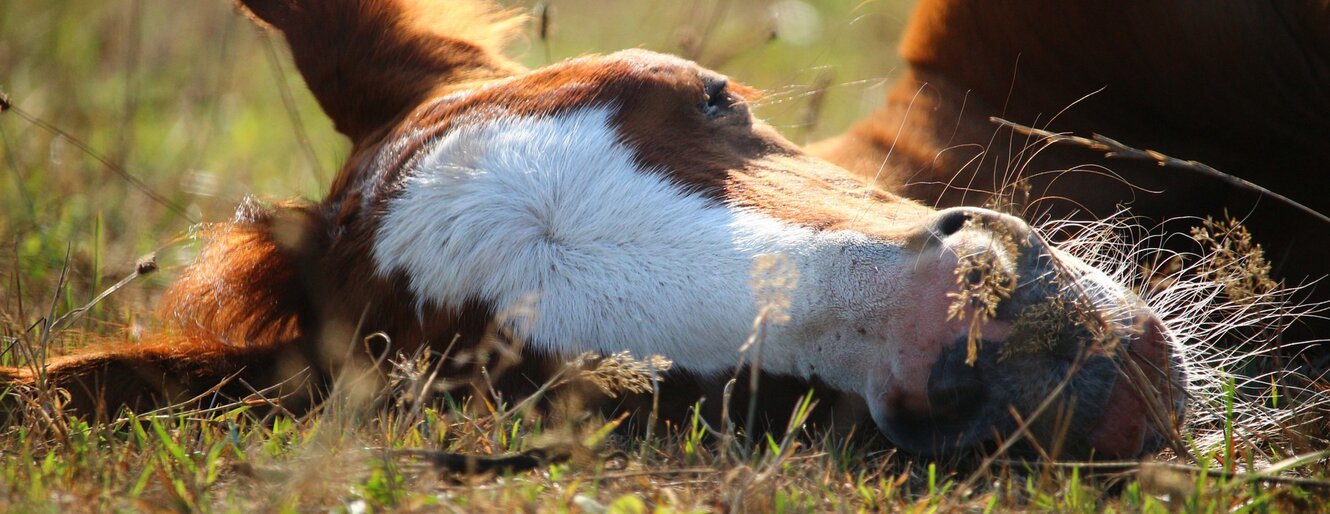
Lorenz Gygax from the Animal Husbandry and Ethology Group investigated how changes in the social and spatial environment of horses throughout the day influence their recumbency (lying down) periods, which affect their REM sleep. To see what helps horses to dream check out their Article published in Equine Vetenary Journal!
Neurons can be so refractory!

Stochastic integrate-and-fire (IF) models are fundamental tools for understanding neuronal dynamics. A key challenge is relating the spontaneous fluctuations of these models to their responses to external stimuli. While recent work has established a fluctuation-response relation (FRR) for IF models, incorporating realistic features like a refractory period and finite spike shape significantly complicates the analysis. If you are curious how the Theory of Complex Systems and Neurophysics Group(Benjamin Lindner) addressed this challenge, and what open questions remain for future research, check out their Biological Cybernetics Article!